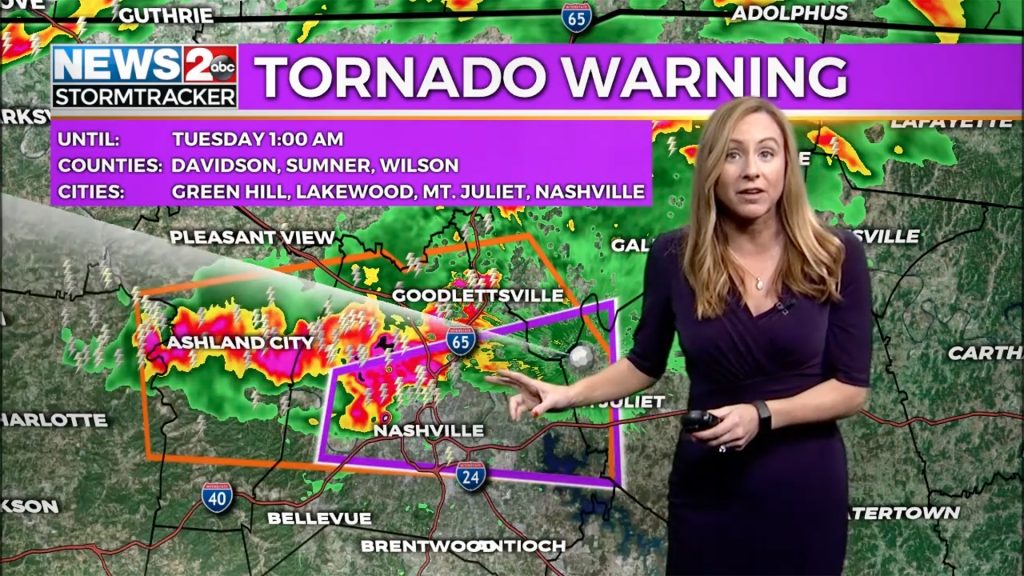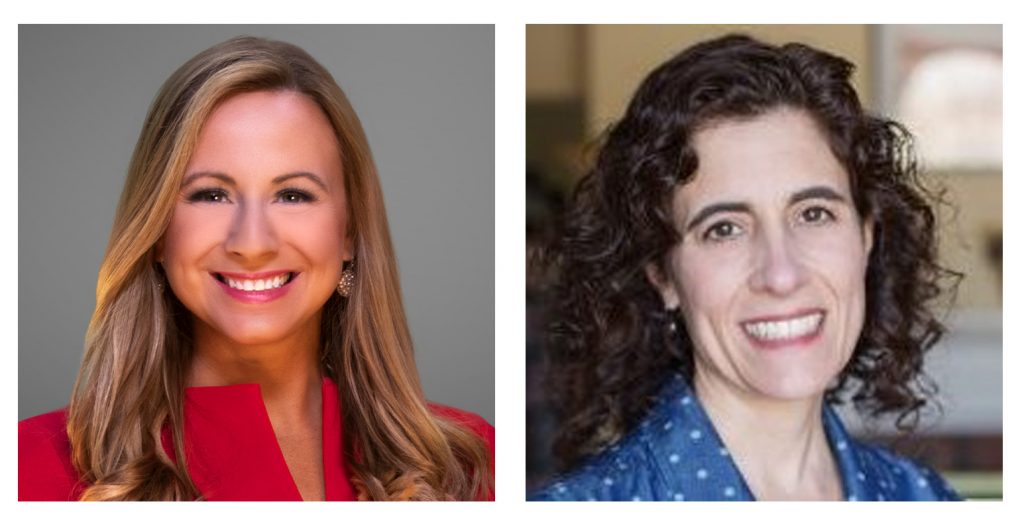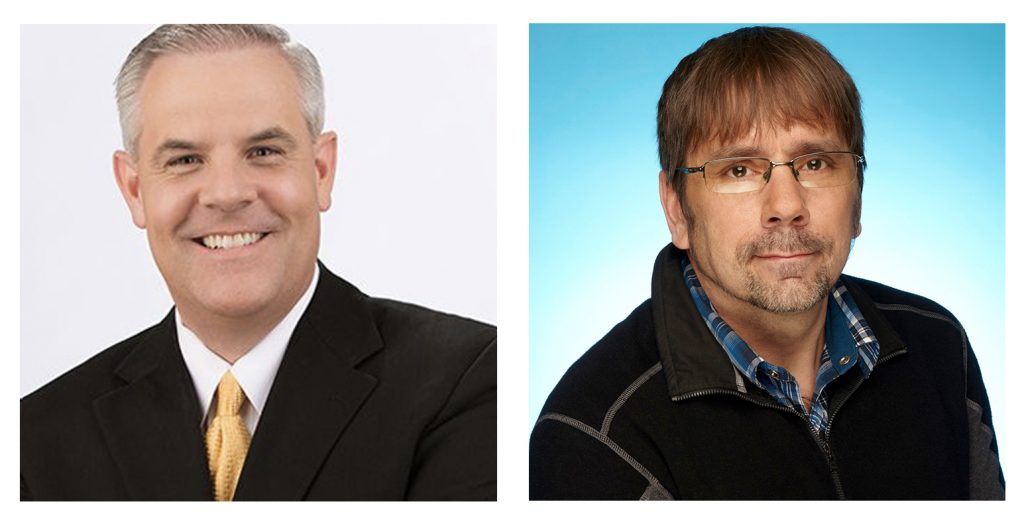
EDITOR’S NOTE: This is the second story in Changing Weather, our new, occasional series on innovations in local weather coverage. Check out the first installment here.
Danielle Breezy was surrounded by storms. Breezy, the aptly named chief meteorologist at Nexstar-owned WKRN-TV in Nashville, had more than one human being could handle on a night last March, as tornado warnings were issued left and right.
“We had 10 tornadoes. One [had one of the ] largest tracks…we’d ever had in Tennessee history, and it was on the ground for like 50 miles,” she says. “It kept lifting a little and coming back down, lifting a little and coming back down, so the warnings would come off and on.”
But fortunately for Breezy, she got some help from a non-human source. She’s one of a growing number of meteorologists using “augmented intelligence” — a cousin of artificial intelligence that emphasizes the collaboration of human and machine — to enhance their forecasting abilities.
To keep up with the alerts, Breezy set triggers with the augmented intelligence in her computer system, telling it to notify her the instant anything changed. That way, she was able to give her viewers the breaking information they needed to stay safe — without breaking stride in her broadcast, rushing to render graphics, or scrambling to stay on top of the shifting reports.
“It saved us that night, because it kept track of where the warnings were,” she says. “If I have a tornado or severe thunderstorm or flash flood warning while I’m in the middle of a newscast, it triggers me with an alert tab. I literally touch it and go, ‘We just got a warning. Let’s go straight to it.’ And it’s zoomed in on the actual warning.”
That easy, automated process is exactly what The Weather Company is aiming for as it develops augmented intelligence products that streamline weather workflows. But Therese DeMatteo, the IBM-owned company’s product marketing manager, says Breezy’s live broadcast is just one example of all the technology can do. The biggest innovations lie in digital solutions, which she says curate vast forecast data and modeling systems to help swamped meteorologists serve audiences across multiple platforms.

“We know people aren’t watching television as much. They’re getting it on mobile devices,” says DeMatteo. “So the meteorologist’s job has gotten a lot harder. He or she doesn’t only have to create content that will be seen on-air. Now, the poor things have to create content for all of their social networks, for their website, for their mobile apps — and soon, if not already, for OTT. So we try to supply them with tools that make their jobs easier.”
One of those tools is Max Engage, which delivers personalized forecasts on mobile, digital, and social. Breezy uses the augmented intelligence to synthesize targeted data for her market’s sports fans, which she can publish after just a look and maybe a few tweaks. “We have a lot of college football games in different areas — Vandy is in Nashville, the Vols are in Knoxville — so we do hyperlocal forecasts,” she says. “You can go into the interface, and I circle 10 miles around Nashville. That forecast only goes to peoples’ cell phones in that area, the people who are impacted by that game, and that’s pretty cool.”
It’s also a pretty quick way to engage users without sacrificing the time Breezy wants to spend crafting her region’s seven-day forecast or Nashville’s hour-by-hour. “With all of the other tasks that we have to do besides the actual on-air product for our newscasts, it’s helpful,” she says. “You’re still the meteorologist. But to get on it faster, without doing a lot, is super helpful.”
Hyperlocal targeting is also key for Kevin Eubank’s market. He’s chief meteorologist at Salt Lake City’s KSL-TV, which is owned by Bonneville International and serves Utah, Nevada, Idaho, Colorado, Wyoming, and “even a little bit of Arizona.” “That’s an immensely huge area,” he says. “I’ve got skiers, hikers, National Park people — all sorts of people who all want something different from my forecast. And I can’t give it to them in three and a half minutes. I just can’t.”
To remedy that, his station uses Max Mobile with Weather InSight, another product from The Weather Company that uses augmented intelligence to create targeted forecasts for users on KSL’s app. “They’re able to get the data they want, when they want it, from a source they trust,” says Eubank. The program also gets smarter as it gets to know you better: “Whether you’re interested in pollen or air quality or snow reports or water temperatures, the more you use it, the more the AI is able to understand that’s important to you. And so it serves that data more to you.”

Though the technology is automated, Eubank still adds value to the data — humanizes it, if you will — to make it more relevant to his audience. “I can feed in videos. I can feed in clips of our own radar. I can link that to historical information,” he says. “Maybe they want to know: What are the average temperatures? When is the best time to visit the park? Or what resort gets the most snow? There are all sorts of things that you can use to tie that data back to a local level.”
The Weather InSight program also helps him build short, evergreen videos on those subjects and set them to auto-publish to specific areas of his market as soon they become relevant. “When temperatures reach 100 degrees or higher, he can link that to an explainer graphic on not leaving pets in cars right now. And that can go out automatically, without a human in the loop,” says Rodney Thompson, senior strategist at The Weather Company.
“He can’t tell the weather story for the valley, the shelf, and the mountains five times a day, right? That’s 15 weather videos you would have to do, and as he’s producing them, it’s changing,” says Thompson. “But he’s going to let AI come in and augment what he’s doing. He’s the storyteller, and the AI is telling the story with specificity.”

All of that content can be monetized with pre-roll and banner ads, too. While pricing for The Weather Company’s tools is based on market size, the company’s pitch is that the investment “does end up paying for itself,” in DeMatteo’s words. Thompson adds that some stations increased their mobile video views from about 5,000 a month to 60-80,000 in their first month of leveraging Max Engage. “And they can reach a quarter of a million people in severe weather,” he says.
Kevin Eubank agrees the technology doesn’t just “augment” his forecasts, but also his station’s bottom line. “It’s that innovation and connection to an audience that your advertisers want,” he says. “That’s where they’re willing to invest their advertising dollar, which in essence, creates our operating dollar.”
“And there are some in the industry who fear that a little bit — like, ‘If you’ve got augmented intelligence running around, the algorithm is replacing good meteorologists.’ But hey, if that’s your concern, you’re too late,” says Eubank. “When you open up your phone, and Siri or whatever tells you what the weather is, that is data that’s been aggregated. So that’s already happened. But what it all means to the end user? How it’s relevant to them? And coming from a trusted source? There’s still a place for meteorologists to be there and explain that.”
If you know a meteorologist who deserves to be featured in our ongoing series, please send us an email at cronkitenewslab@asu.edu.
Get the Lab Report: The most important stories delivered to your inbox